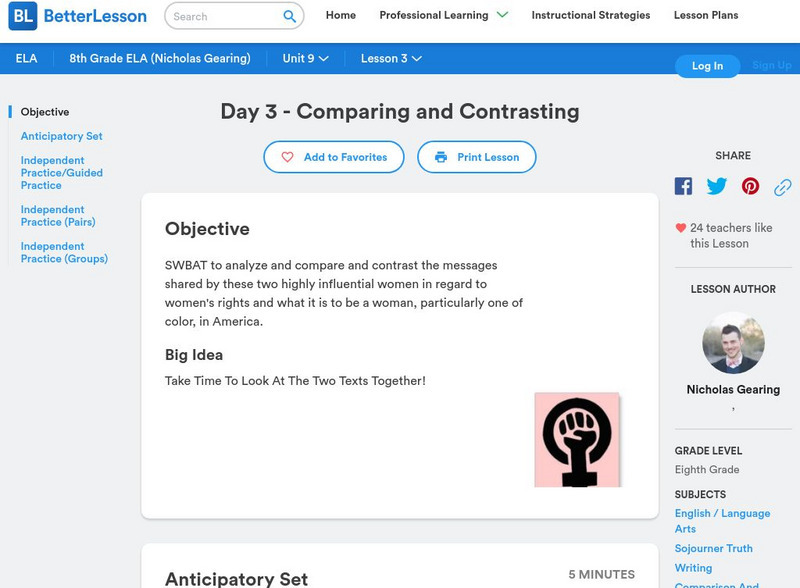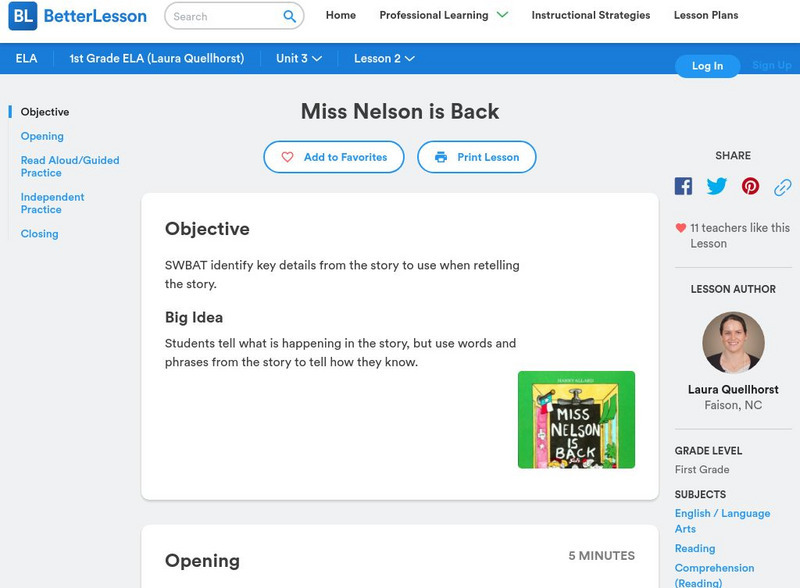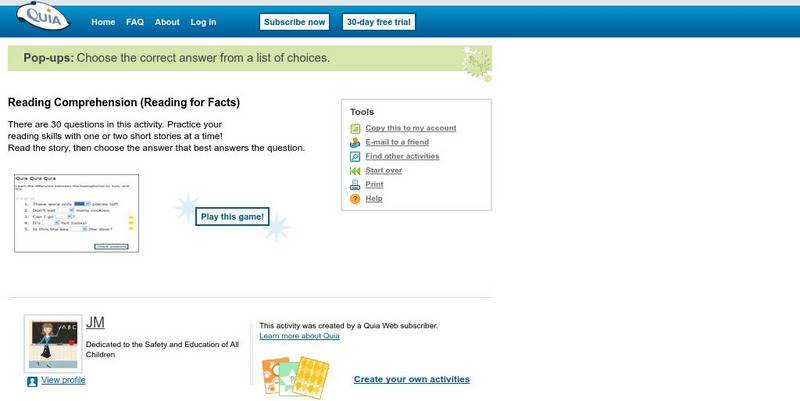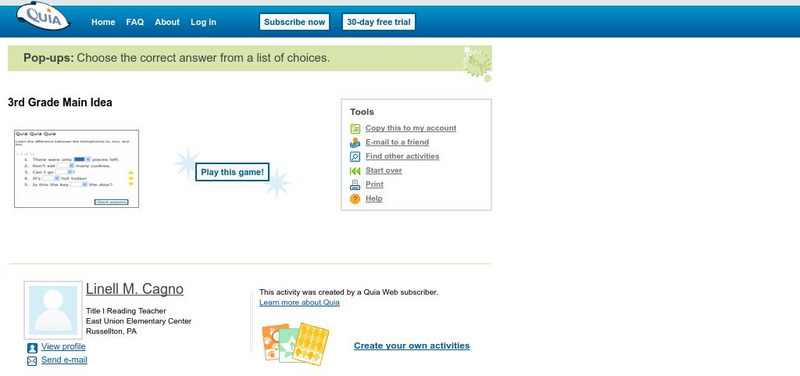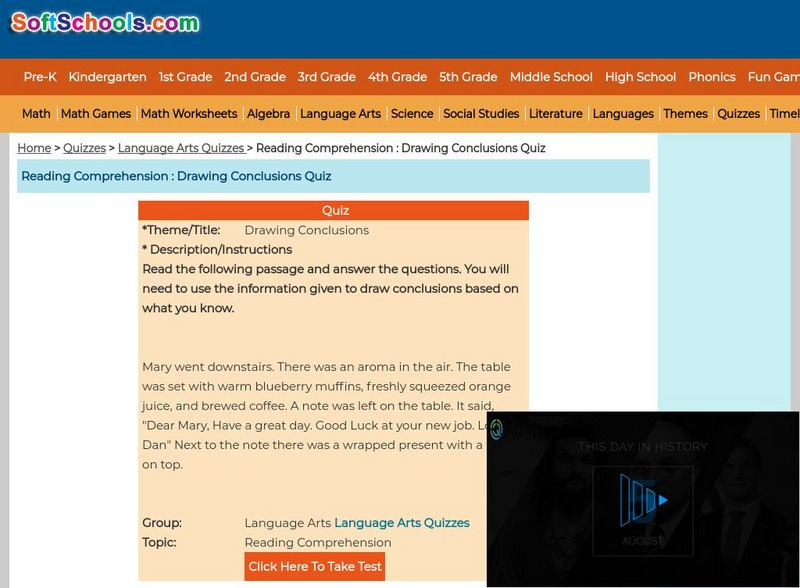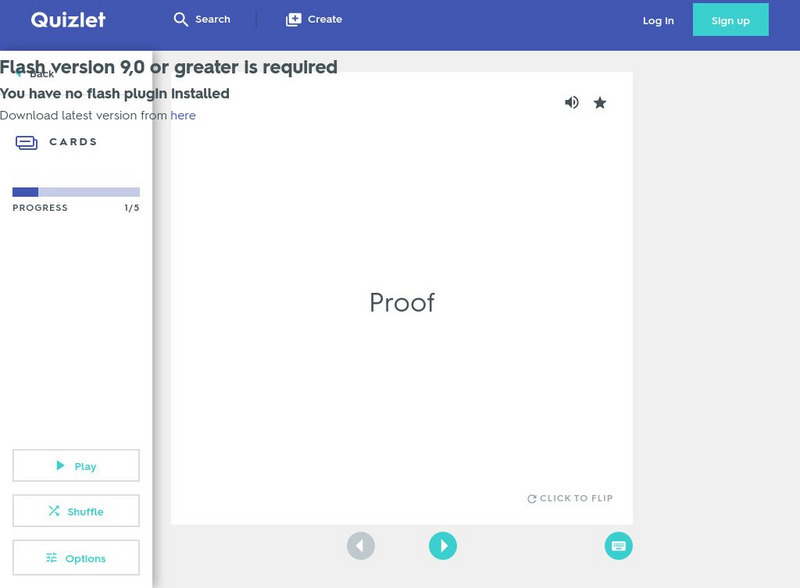Sophia Learning
Sophia: In Text Citations: Lesson 6
This lesson introduces in-text citations and how to embed them in text. It is 6 of 7 in the series titled "In-Text Citations." W.9-10.8 Sources
Scholastic
Scholastic: Informational Text: Reading Response: Main Ideas & Details [Pdf]
This graphic organizer can be used with students when they read informational text. Students will write the main idea in a central oval and then write four details that support the main idea of this reproducible graphic organizer.
Scholastic
Scholastic: Informational Text: Reading Response: Claim Evldence Reasoning [Pdf]
This graphic organizer can be used with students when they read informational text. Students will identify a claim, list text evidence that supports the claim, and explain how the information can be used for their future understanding of...
Polk Brothers Foundation Center for Urban Education at DePaul University
Depaul University: Center for Urban Education: I Can Explain an Inference [Pdf]
This tool can be used to help students articulate their answers about fiction pieces. Students will quote the text, provide an inference, and give a justification.
Curated OER
Mc Graw Hill: 6th Grade Use Text Evidence
Learn how to use text evidence to draw inferences; click the Model button on bottom right.
Texas Education Agency
Texas Gateway: Literary Nonfiction
Analyze literary nonfiction, particularly speeches, by making inferences and drawing conclusions based on evidence in the text.
Polk Brothers Foundation Center for Urban Education at DePaul University
De Paul University: Center for Urban Education: A Good Student [Pdf]
"A Good Student" is a one page, fictional reading passage about a freshmen going to a large high school on the first day of school. It is followed by constructed-response questions which require students to provide evidence from the...
Better Lesson
Better Lesson: Day 3 Comparing and Contrasting
Students will analyze and compare and contrast the messages shared by two highly influential women in regard to women's rights and what it is to be a woman, particularly one of color, in America. The texts that will be compared are "Aint...
Better Lesson
Better Lesson: Roll a Question
Roll cubes to make answering questions. It's an exciting and engaging lesson.
Better Lesson
Better Lesson: Miss Nelson Is Back
First graders tell what is happening in the story, but use words and phrases from the story to tell how they know.
Better Lesson
Better Lesson: Using Word and Picture Clues to Make an Inference
First graders will use text evidence to make inferences about word and word phrase meanings in a text. Word and picture clues will be used to help students form inferences.
Quia
Quia: Reading for Facts
This interactive quiz assesses students' reading comprehension skills of informational text passages. Students will read 30 short passages and answer question about a detail for each.
Quia
Quia: 3rd Grade Main Idea
This short interactive activity assesses students' ability to identify main idea. Students will read three short passages and identify the main idea of each.
Other
Mr Behm: Claim, Reason, & Evidence
Improve your writing skills by learning about claim (argument), reason (logical support), and evidence (proof). CCSS.ELA-Literacy.WHST.6-8.9 Draw evidence from informational texts to support analysis, reflection, and research.
Sophia Learning
Sophia: Adding Words to Quotations: Lesson 3
This lesson goes over how to alter a quotation by adding or changing words. It is 3 of 3 in the series titled "Adding Words to Quotations."
Soft Schools
Soft Schools: Drawing Conclusions
Read a literary text paragraph and then answer questions that require the reader to draw conclusions from the text in this nine-question quiz.
Quizlet
Quizlet: Flashcards 8th Grade Evidence/inference
This set of interactive flashcards focuses on terms having to do with evidence and inference-related definitions. These terms include the following: evidence, analysis, inferences, explicit, and imply.



![Scholastic: Informational Text: Reading Response: Main Ideas & Details [Pdf] Graphic Scholastic: Informational Text: Reading Response: Main Ideas & Details [Pdf] Graphic](https://content.lessonplanet.com/knovation/original/241272-21ebac911f8734b3826318f202df38b5.jpg?1661510811)
![Scholastic: Informational Text: Reading Response: Claim Evldence Reasoning [Pdf] Graphic Scholastic: Informational Text: Reading Response: Claim Evldence Reasoning [Pdf] Graphic](https://content.lessonplanet.com/knovation/original/244734-74184753ee53d6872b10ba36f1639585.jpg?1661510818)
![Depaul University: Center for Urban Education: I Can Explain an Inference [Pdf] Graphic Depaul University: Center for Urban Education: I Can Explain an Inference [Pdf] Graphic](https://d15y2dacu3jp90.cloudfront.net/images/attachment_defaults/resource/large/FPO-knovation.png)
